Pasta Aglio e Olio
Updated Jul 11, 2025
This post may contain affiliate links. Please read our disclosure policy.
The classic easy combination of olive oil, garlic, and pasta, seasoned with salt and pepper plus red pepper flakes, and loosened up with a bit of pasta cooking water. Simple perfection in 15 minutes.
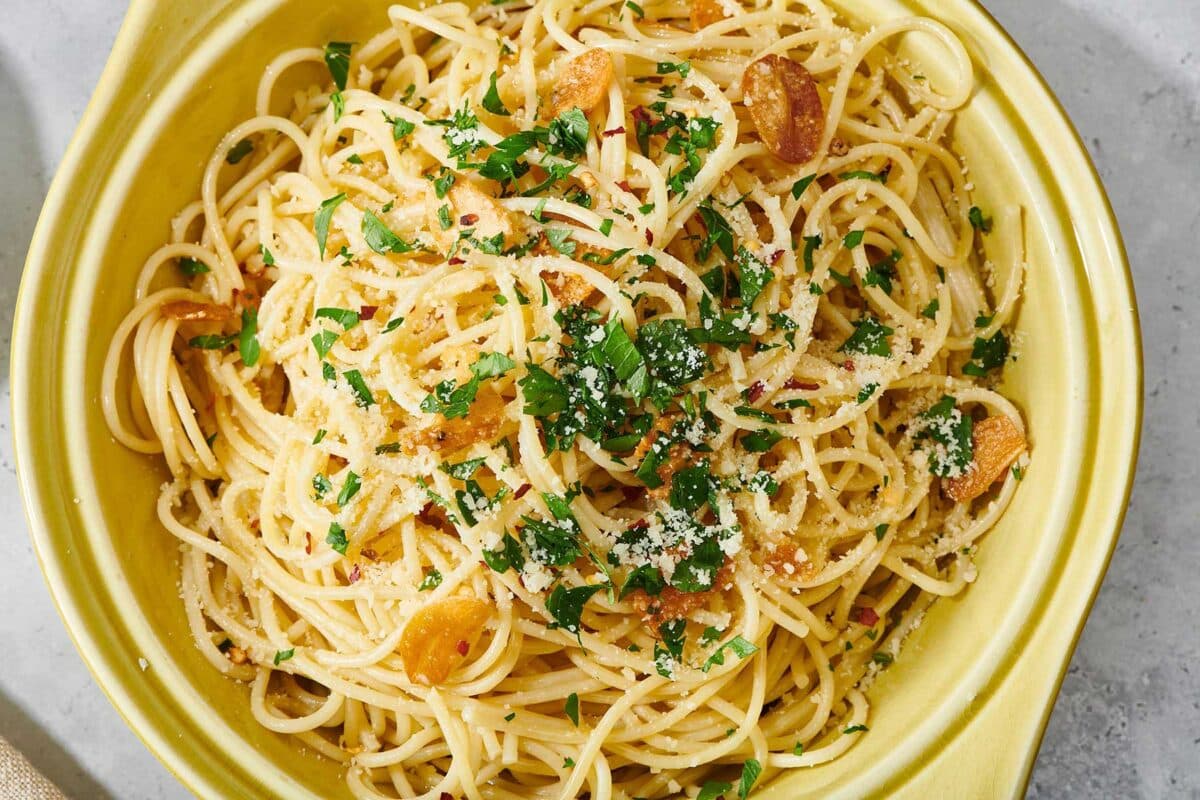
Spaghetti Aglio e Olio is the pasta dish for those nights when you feel like you have zero time and zero energy to get dinner on the table. It’s also the perfect pasta when you want something simple and flavorful, nothing fancy or complicated. It’s a noodle dish that even picky eaters will usually embrace; you can dial down the amount of garlic and reduce or skip the addition of red pepper flakes if you want a more subtle flavor.
To round out this simple pasta dinner, make some simple sautéed broccolini or sautéed broccoli, and add a salad with a simple vinaigrette or Italian dressing.
What's In This Post?
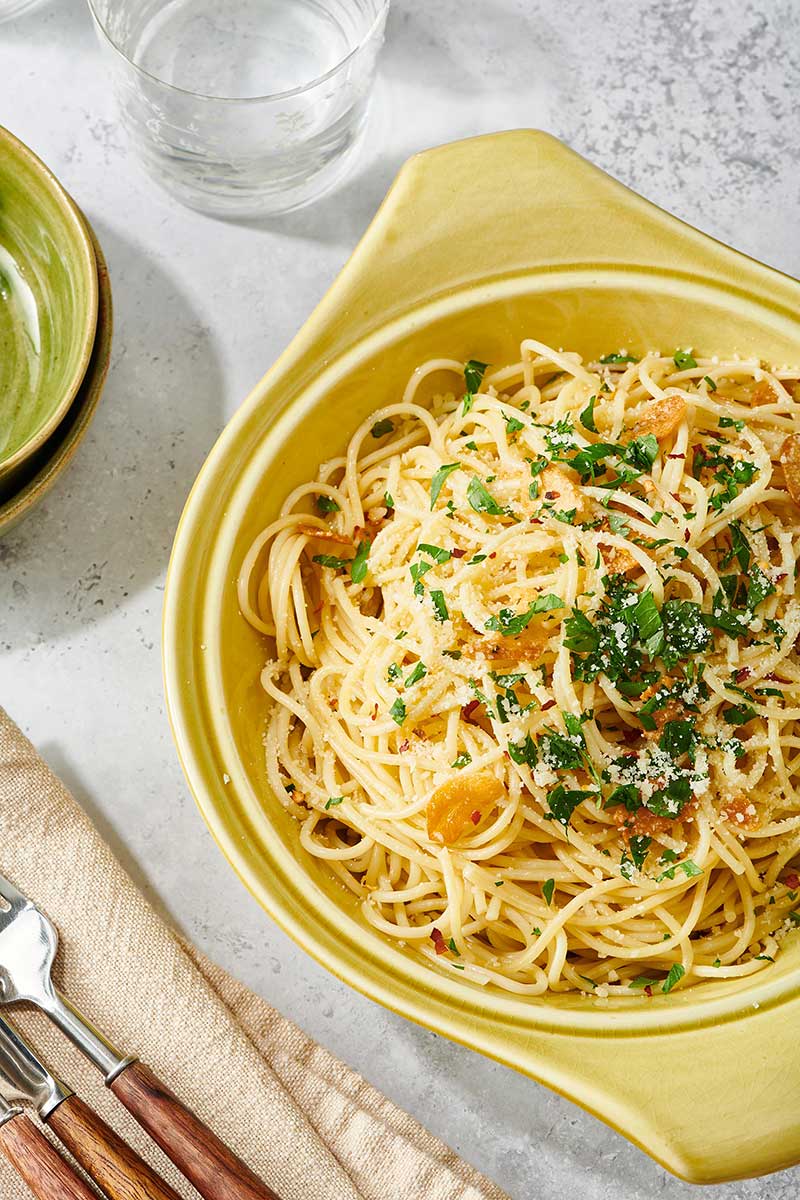
Spaghetti Aglio e Olio
Spaghetti Aglio e Olio is a very popular dish in Naples and throughout Italy. It’s cheap, it’s made with pantry staples, and it comes together quickly and easily.
By signing up, you agree to our Privacy Policy.
In its purest form, this dish is a combo of olive oil, garlic, and pasta, seasoned with salt and pepper plus red pepper flakes and loosened up with a bit of pasta cooking water. The parsley and Parmesan are optional and frequently added, but in its purest form, you don’t even need to include those ingredients.
How Do You Pronounce Aglio e Olio?
It is pronounced Spaghetti AHL-yoh eh OHL-yoh. The translation is “spaghetti with garlic and oil,” and that is just about the entirety of this dish. But well-made, Spaghetti Aglio e Olio is vastly different from a slapdash one, even though it takes the same amount of time to do it well.
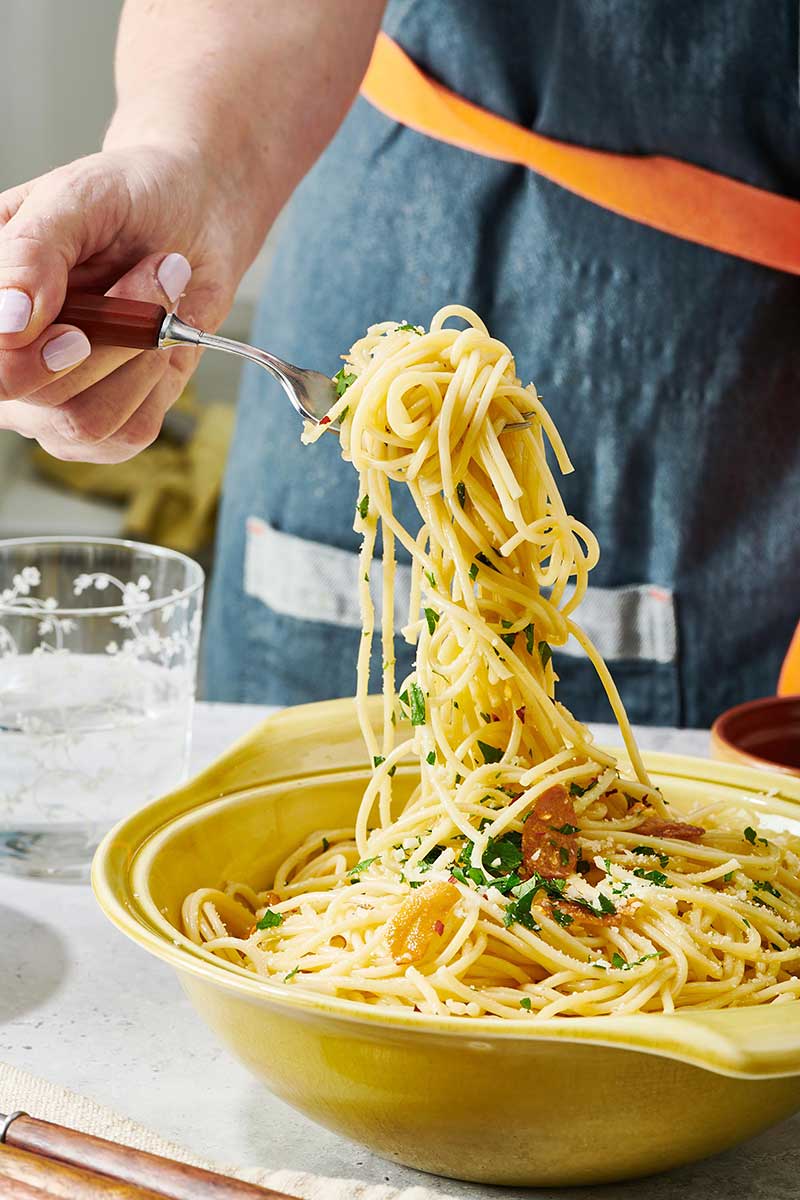
Ingredients
- Extra-virgin olive oil – Use good olive oil; the best olive oil that you have. This is a good use of extra-virgin olive oil, as it is one of the few key ingredients in the dish.
- Garlic cloves – The main ingredient in this pasta recipe. Make sure the cloves of garlic are very thinly sliced.
- Red pepper flakes – This gives your dish a little kick. You can add as much or as little as you like.
- Spaghetti – Buy a good pasta, preferably an Italian brand. If you can find artisanal or bronze-cut dried spaghetti, you will find that it has a more interesting texture; even when fully cooked, it doesn’t become too soft or mushy. This dish is usually made with spaghetti or another long, thin pasta like linguine or fettuccine. Spaghetti Aglio e Olio is almost always made with dried rather than fresh pasta in Italy.
- Grated Parmesan – Optional, but who doesn’t love some grated Parm?
- Fresh flat-leaf parsley – Adds a touch of freshness.
How to Make Aglio e Olio
- Make garlic oil: Combine the olive oil, garlic, and red pepper flakes in a small saucepan over medium-low heat. Allow the oil to heat up with the garlic swirling around and crisping up.
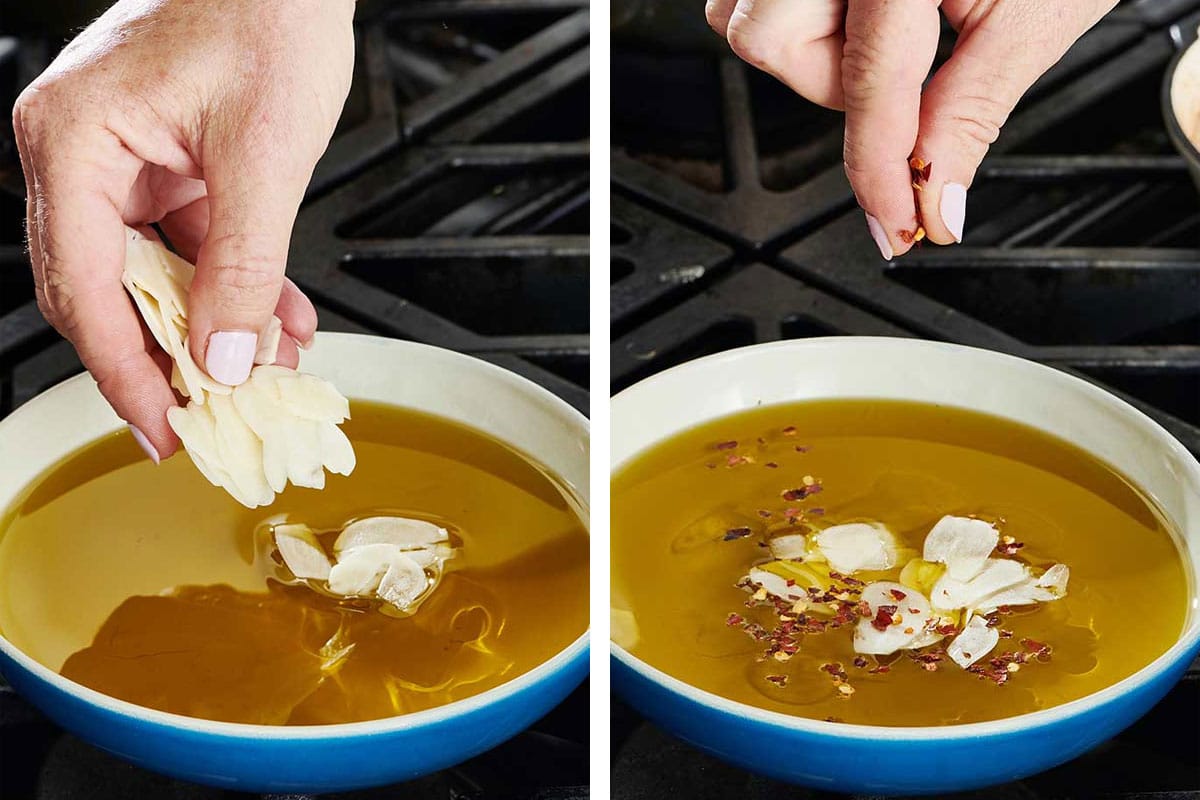
- Cook the pasta: Cook according to package directions until al dente. Reserve 1/2 cup of the pasta cooking water, and drain the pasta.
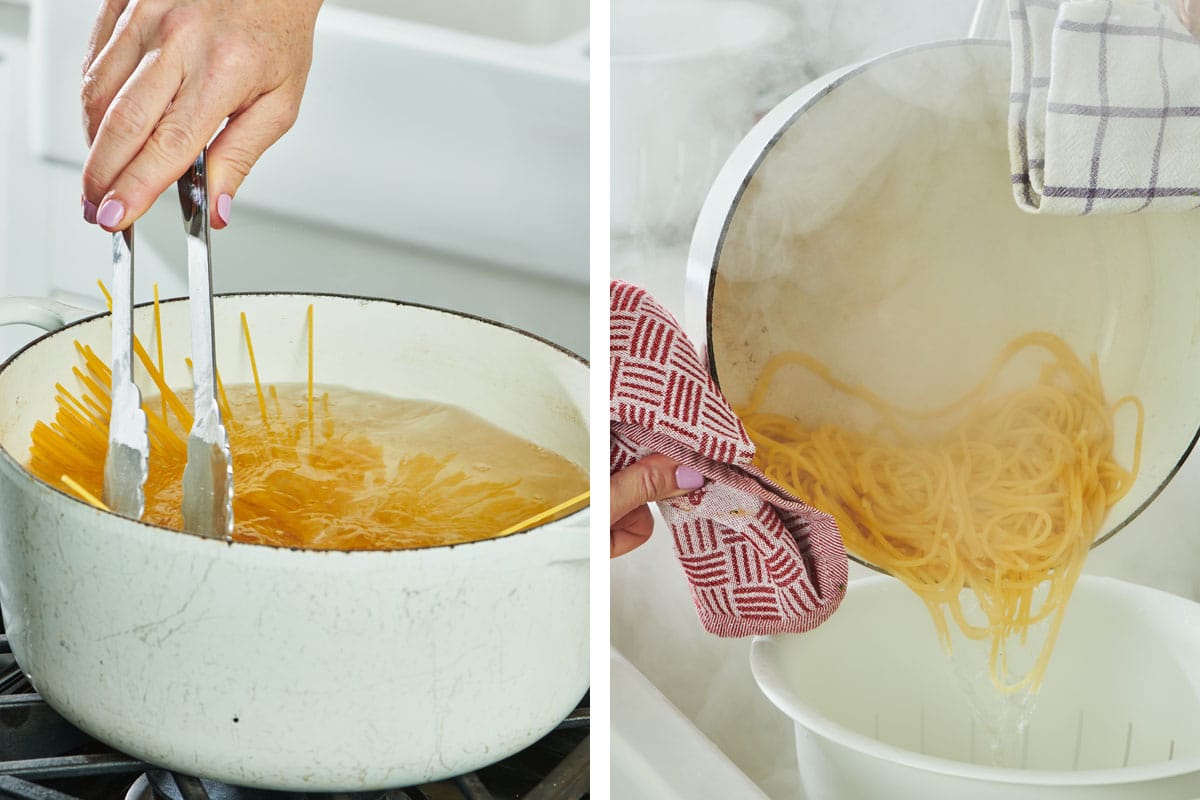
- Finish and serve: Return the pasta to the pot, pour in the garlic oil with the sliced garlic, and toss gently, adding as much of the reserved pasta water as you wish to create a sauce, along with the Parmesan cheese, if using. Season with salt and pepper to taste. Add more oil as desired, and toss. Garnish with the chopped fresh parsley, if desired, and serve.

Tips for Perfect Aglio e Olio
- There are very few ingredients in this dish, so make every one of them count!
- The garlic can’t be overcooked or over browned, or undercooked. Take the time to sauté the garlic for a few minutes over just the right heat level to get that perfectly golden, fragrant, nutty garlic. Start the garlic and oil at room temperature, and gently heat the two ingredients together. This allows you to control the cooking process, and the garlic will color evenly and slowly. Browned garlic becomes bitter, and burnt garlic even more so. Use fresh garlic that you slice yourself, rather than the pre-minced stuff in a jar — it’s the predominant flavor of the dish, so the freshness really counts.
- Get essential tips for making perfect pasta!
- Add the oil and cheese (if using) and seasonings as soon as the pasta is drained. The hotter the pasta, the more easily it will absorb the oil and cheese.
- You can add some other fresh herbs to this dish at the end when you toss the pasta with the garlic oil. Think about a couple of tablespoons of chopped basil or mint, or a combo.
Leftovers and Storage
Leftover pasta aglio e olio may be stored for up to 4 days in a tightly covered container in the fridge. Reheat over low heat, stirring often, until just warmed through. You may need to add a little bit more water to loosen up the pasta if it is a bit dry.
What to Serve With Pasta Aglio e Olio

More Simple Pasta Recipes
- Pasta with Tomato Sauce
- Spaghetti and Meatballs
- Cacio e Pepe
- Penne all’Arrabbiata
- Vietnamese Garlic Noodles
Pin this now to find it later
Pin It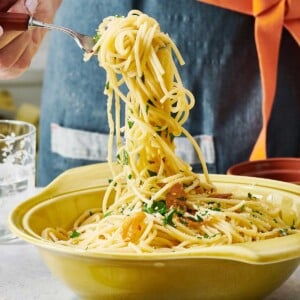
Pasta Aglio e Olio
Ingredients
- ½ cup extra-virgin olive oil (plus more as needed)
- 3 garlic cloves (very thinly sliced)
- ½ teaspoon red pepper flakes (plus more to serve)
- Kosher salt and freshly ground black pepper (to taste)
- 1 pound dried spaghetti
- ½ cup finely grated Parmesan (plus more to serve; optional)
- Chopped fresh flat-leaf parsley (to serve; optional)
Instructions
- Place the olive oil in a small saucepan over medium-low heat. Add the garlic and red pepper flakes. Allow the garlic to warm and give the oil a swirl or stir every now and then until the oil heats up and the garlic just begins to turn light golden. Adjust the heat as necessary if the garlic appears to be turning golden too slowly or coloring too quickly. When the garlic has just turned golden, remove it from the heat.
- Meanwhile, bring a large pot of salted water to a boil. Cook the pasta according to package directions until al dente, then remove 1/2 cup of the cooking water. Drain the pasta.
- Return the pasta to the pot, and then pour in the garlic oil. Make sure that the garlic doesn’t get left behind in the pan. Toss gently, adding as much of the reserved pasta cooking water as you wish to create a sauce, and the Parmesan if using. Season with salt and pepper to taste. Add more oil as desired/needed, and toss until the pasta is well coated with the oil and garlic. Garnish with the parsley, if desired, and serve.
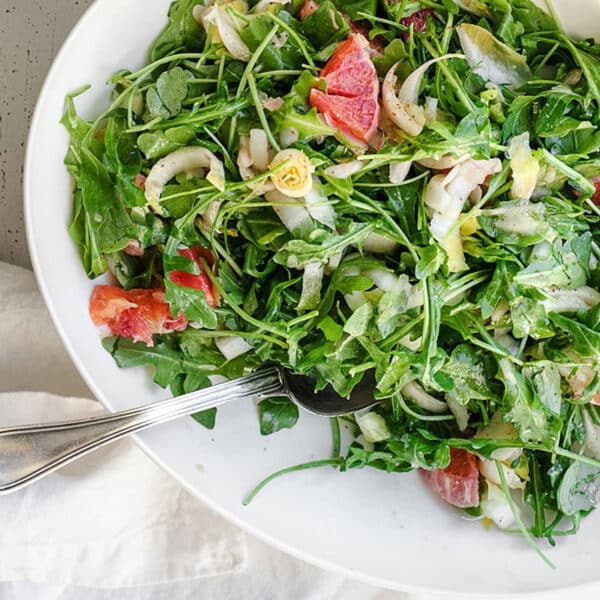

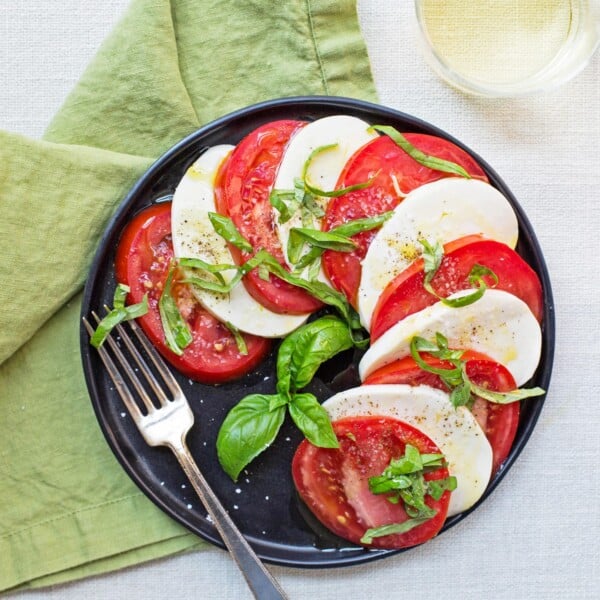
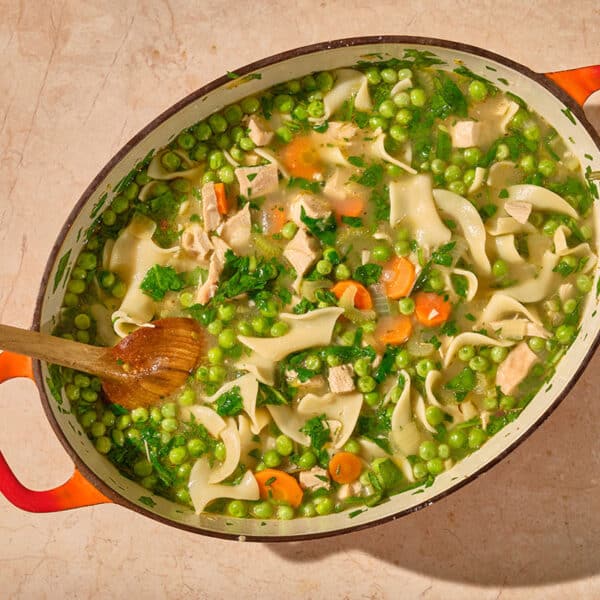
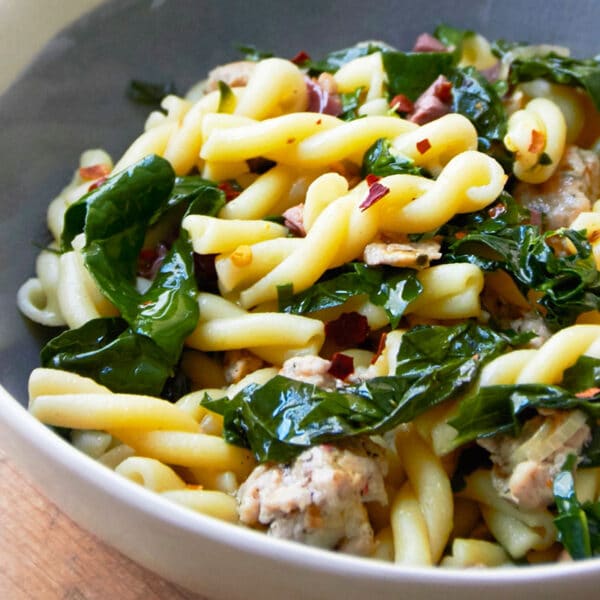
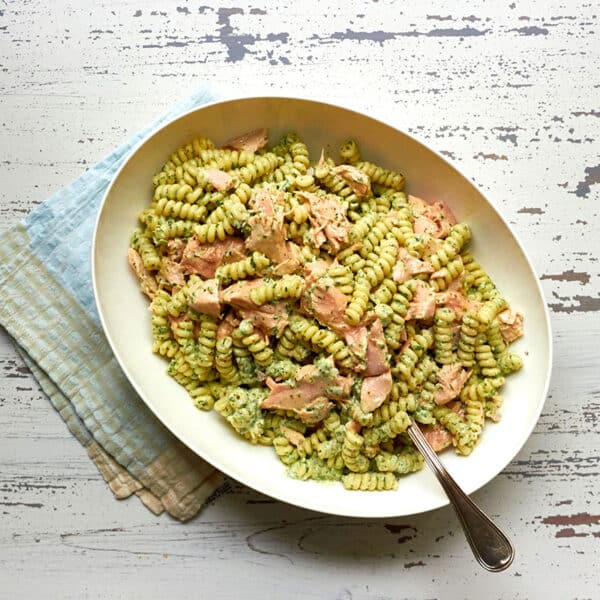
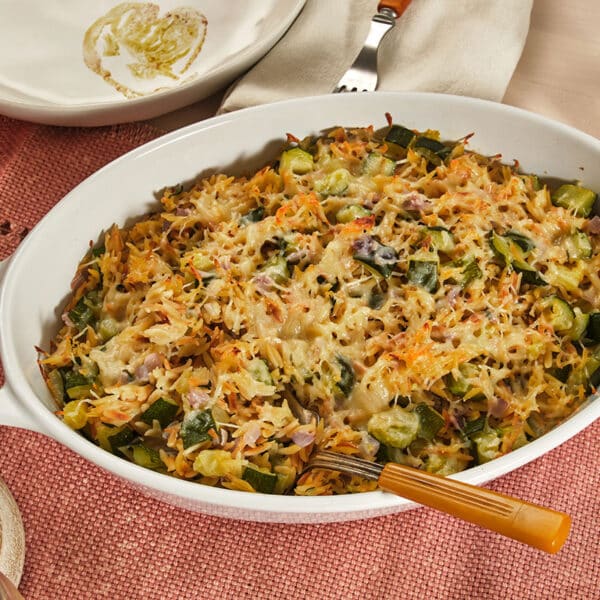









mmmmm- so simple and delicious